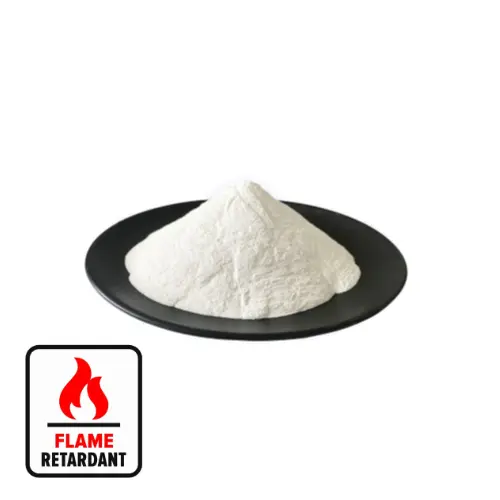Hebei Messi Biology Co., Ltd. stated that this article will explain the following aspects: the basic concept of ultrafine magnesium hydroxide, its role in PVC flame retardant films, and the current research status. I hope that through the introduction of this article, everyone can have a deeper understanding of this field.
First, let’s understand what ultrafine magnesium hydroxide is. Ultrafine magnesium hydroxide is a colorless and odorless powdered substance that is widely used in many fields due to its unique chemical structure and physical properties. In the plastics industry, especially in PVC (polyvinyl chloride) films, ultrafine magnesium hydroxide also has important application value.

Magnesium hydroxide is a medium-strong base (the solubility of magnesium hydroxide is very small, and the solution is very weakly alkaline, and is sometimes treated as a weak base). It is dehydrated and decomposed when heated to 623K (350℃): Mg(OH)2 →MgO+H2O, which is easy to Soluble in acid or ammonium salt solution. Like magnesium oxide, it easily absorbs carbon dioxide in the air and gradually forms a basic carbonate composed of 5MgO·4CO2·xH2O. It decomposes into magnesium oxide and water above 350℃, but can only be completely dehydrated above 1800℃.
Magnesium hydroxide flame retardant has a high decomposition temperature (340°C ~ 450°C), and the thermal decomposition products are MgO and H2O. It does not release any toxic and harmful substances and does not cause any harm to the environment and human health. Therefore, magnesium hydroxide flame retardant has become One of the most popular inorganic flame retardants at present, it has broad application prospects.
So, what role does ultrafine magnesium hydroxide play in PVC flame retardant films?
Research has found that when ultrafine magnesium hydroxide is introduced into PVC films as a flame retardant synergist instead of zinc borate, it not only maintains the flame retardant requirements of PVC, but can also significantly improvydroxide can release water vapor during the pyrolysis process, these water vapor can dilute the burning fragments of PVC and absorb the HCl released by PVC to a certain extent, weakening the intensity of combustion. At the same time, the generated MgO can cover the combustion front, further inhibiting the generation of smoke and reducing the release of polymer cracking fragments. In this way, ultrafine magnesium hydroxide can help improve the flame retardant performance and smoke suppression effect of PVC films.
At present, research on ultrafine magnesium hydroxide in PVC flame retardant films has made certain progress. The researchers produced ultrafine magnesium hydroxide powder through precision mechanical grinding, and characterized and tested its thermal properties, combustion properties, carbon residue morphology, etc. through various experimental methods.
The results show that when 15% ultrafine magnesium hydroxide is used instead of zinc borate and 2% cobalt trioxide is added, the smoke suppression effect is better and the thermal stability is significantly improved on the basis of meeting the flame retardant requirements. In addition, as the particle size of magnesium hydroxide powder decreases, the smoke suppression effect gradually increases. This provides the possibility to find new ways for the high-value application of ultrafine magnesium hydroxide, and also seeks new methods and ideas for reducing costs and increasing efficiency of PVC films.
In summary, ultrafine magnesium hydroxide, as a new type of clean flame retardant, has the advantages of non-toxic, environmentally friendly, smoke suppression and significant flame retardant effects. Its application in PVC films can not only ensure flame retardant requirements, but also have the advantages of improving smoke suppression performance and improving thermal stability. In the future, as research continues to deepen and technology advances, it is believed that ultrafine magnesium hydroxide will play a greater role in more fields.

